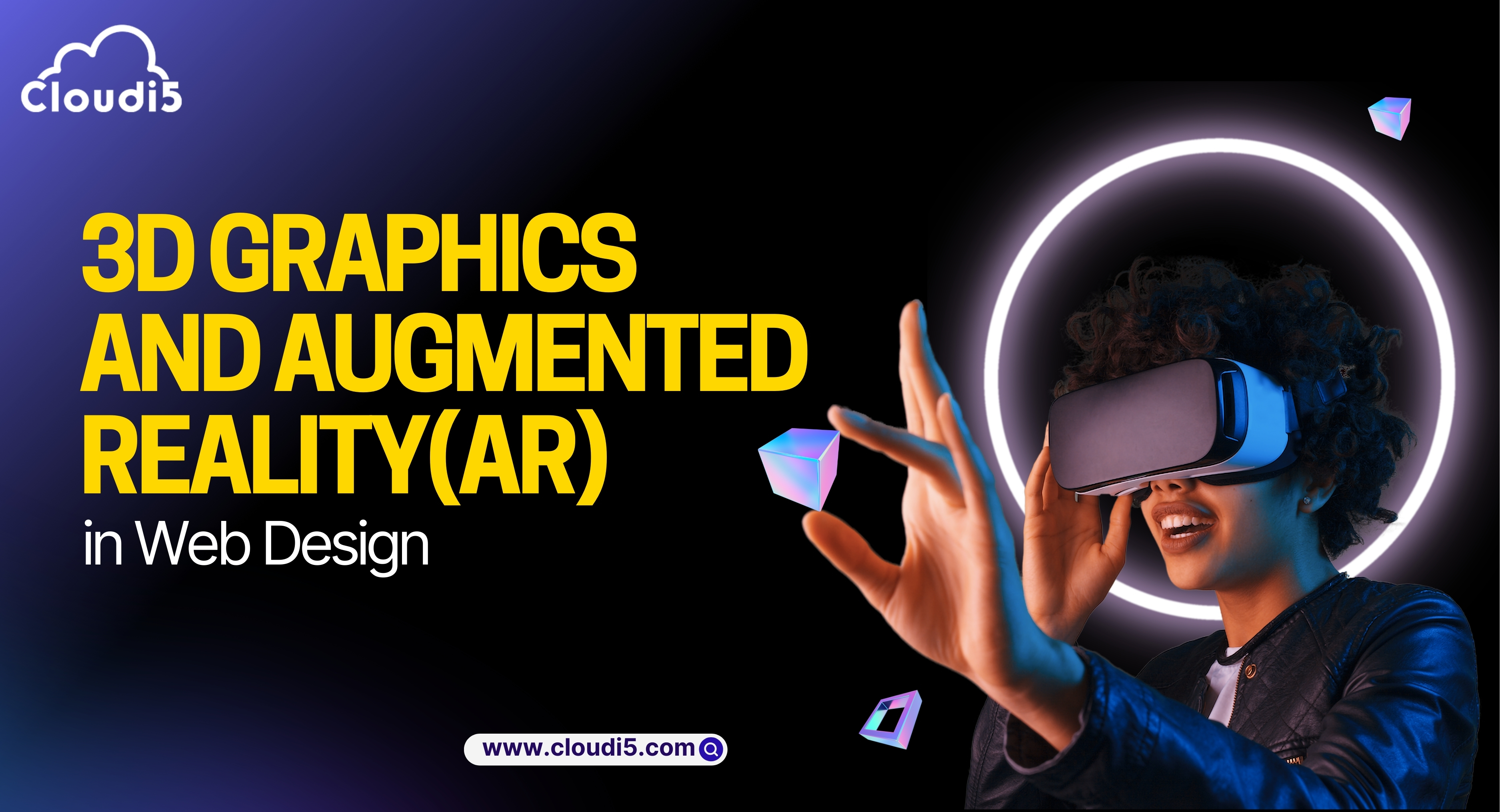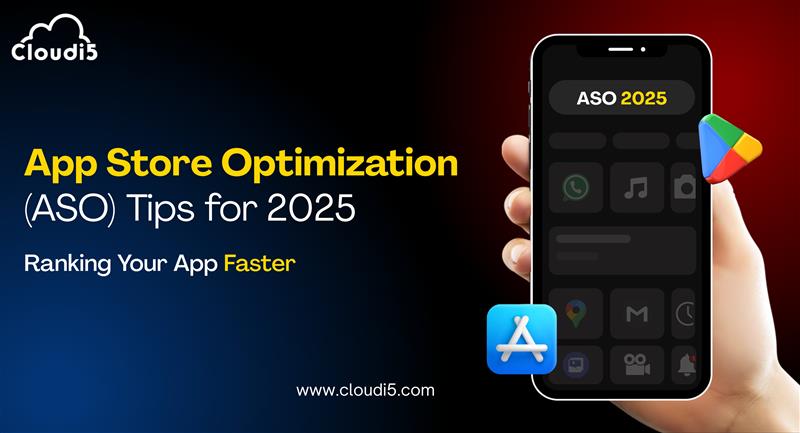
3D Graphics & Augmented Reality (AR) In Web Design
Websites are becoming more interactive as 3D graphics and augmented reality are used in online design. Realistic 3D modelling in web design enables visitors to examine things in incredible detail. The future of web design with AR promises greater storytelling and deeper interaction. Many sectors are already using AR in UI/UX design to stay ahead of the competition, as this is the next big step in digital design.
The rise of 3D graphics in web design:
Web design has evolved significantly from static images and flat drawings. Today, 3D graphics are transforming how people interact with websites by providing depth, realism, and interactivity. Brands may exhibit things in a way that feels nearly tactile by incorporating 3D modelling in web design, allowing customers to rotate, zoom, and view items from all angles. This level of immersion keeps viewers interested for longer and increases their trust in what they see online.
Outside of online shopping, 3D graphics are popping up everywhere on artist portfolios, product landing pages, and storytelling sites to grab attention when everyone else is scrolling. As technology keeps levelling up, sticking some 3D designs into a website is getting simpler and cheaper for both coders and designers. As technology advances, developers and designers will find it easier to include 3D design. The increase in 3D graphics in web design isn't a short-lived trend, as it's quickly becoming the new standard for producing interesting user experiences.
How is augmented reality transforming websites?
The way people engage with websites is changing, thanks to augmented reality in web design. Instead of just scrolling, users may now interact with products, spaces, and services in real time. AR enhances online interactions by allowing you to try on clothes digitally and see furnishings in your living room. This leads to an attractive AR user experience that goes beyond images and gives true immersion.
For businesses, the opportunities are boundless. E-commerce businesses can provide virtual product samples, and real estate agencies can display 3D walkthroughs all within a browser. Websites are becoming clearer, more interactive, and memorable as a result of involving augmented reality in user interface/user experience design. This not only increases client satisfaction but also conversion rates. As technology becomes increasingly accessible, augmented reality is no longer an experimental feature; it is changing websites into interesting platforms that consumers enjoy exploring.
AR and 3D in Next-Generation (UI/UX):
User experience is no longer just about clean layouts and simple navigation; it's about creating moments that look alive. Using AR in UI/UX design, websites are changing from static screens to interactive experiences. Augmented reality in web design enables customers to visualize products, test features, and experience services in a way that is both personal and practical.
At the same time, 3D graphics and modelling in web design add depth, realism, and motion, transforming images into dynamic experiences. When both of these elements work together, they enhance what "next-gen UI/UX" genuinely means, that is, interfaces that are not just visible, but also experienced. For businesses, this indicates more satisfied consumers, longer engagement, and better relationships with their brands. AR and 3D are more than just futuristic add-ons; they are soon becoming essential tools for creating user experiences that stand out in today's digital world.
When AI Meets AR in Web Design?
The combination of AI web design and augmented reality is transforming how users engage with websites. Businesses are able to deliver intelligent, realistic, customized experiences. Here's how:
1. Smarter Personalization
AI analyses user behaviour and provides personalized material, while AR makes it interactive, resulting in a unique AR user experience for each visitor.
2. Virtual Try-Ons and Demos
A web design company may combine AI-powered product recommendations with AR previews, allowing clients to "try before they buy."
3. Predictive UI/UX
AI can improve layouts in real time, and AR in UI/UX design makes navigation more interesting and natural.
4. Data-driven design
AI collects insights to improve user journeys, while AR transforms them into virtual storytelling.
5. The Future of Web Design: AR + AI
The lively combination makes sure that websites are not only visually stunning but also intelligent and interactive.
Popular Tools:
- AI: Wix ADI, Uizard, Framer AI
- AR: Adobe Aero, Zappar, 8thWall
AI web design and AR are working together to shape the future of web design, with AR allowing websites to adapt, react, and engage with users.
Best Tools for bringing 3D and AR into Web Design:
Creating 3D visuals and augmented reality in web design involves the use of appropriate tools. Here are some leading platforms and software that make it simple for designers and web design companies to develop virtual experiences:
1. Blender:
Blender is a powerful 3D modeling software for web designers that enables them to create realistic models, animations, and interactive images.
2. Three.js:
This JavaScript library is useful for embedding 3D graphics straight into web pages, creating dynamic elements that are smooth and reactive.
3. Adobe Aero:
Adobe Aero is perfect for UI/UX design, which allows designers to create AR experiences without requiring heavy code.
4. Zappar and 8thWall:
These tools allow web design companies to incorporate AR into websites and apps, resulting in engaging AR user experiences.
5. Spline:
A simple yet effective tool is used for creating 3D models in web designs that can be simply exported to web projects.
By using these kinds of tools, designers can stay ahead of the newest developments in web design with AR, creating engaging, immersive, and memorable websites for their consumers.
Conclusion:
As technology advances, websites become more than just pages; they are immersive experiences that interact with users. By combining 3D visuals and augmented reality into web design, companies can develop interactive platforms that leave a lasting impact. Modern web design services are now prioritising innovative thinking and creativity by making sure that each user journey is interesting. The digital landscape is growing smarter and more interesting, with AI-driven modifications and augmented reality product previews. Companies that use these technologies early can stand out in a crowded market and strengthen ties with their target audience. Artificial intelligence and the future of web design are combining with 3D graphics and augmented reality to make websites smarter, more engaging, and fully immersive.
Trusted By












Leave Comments